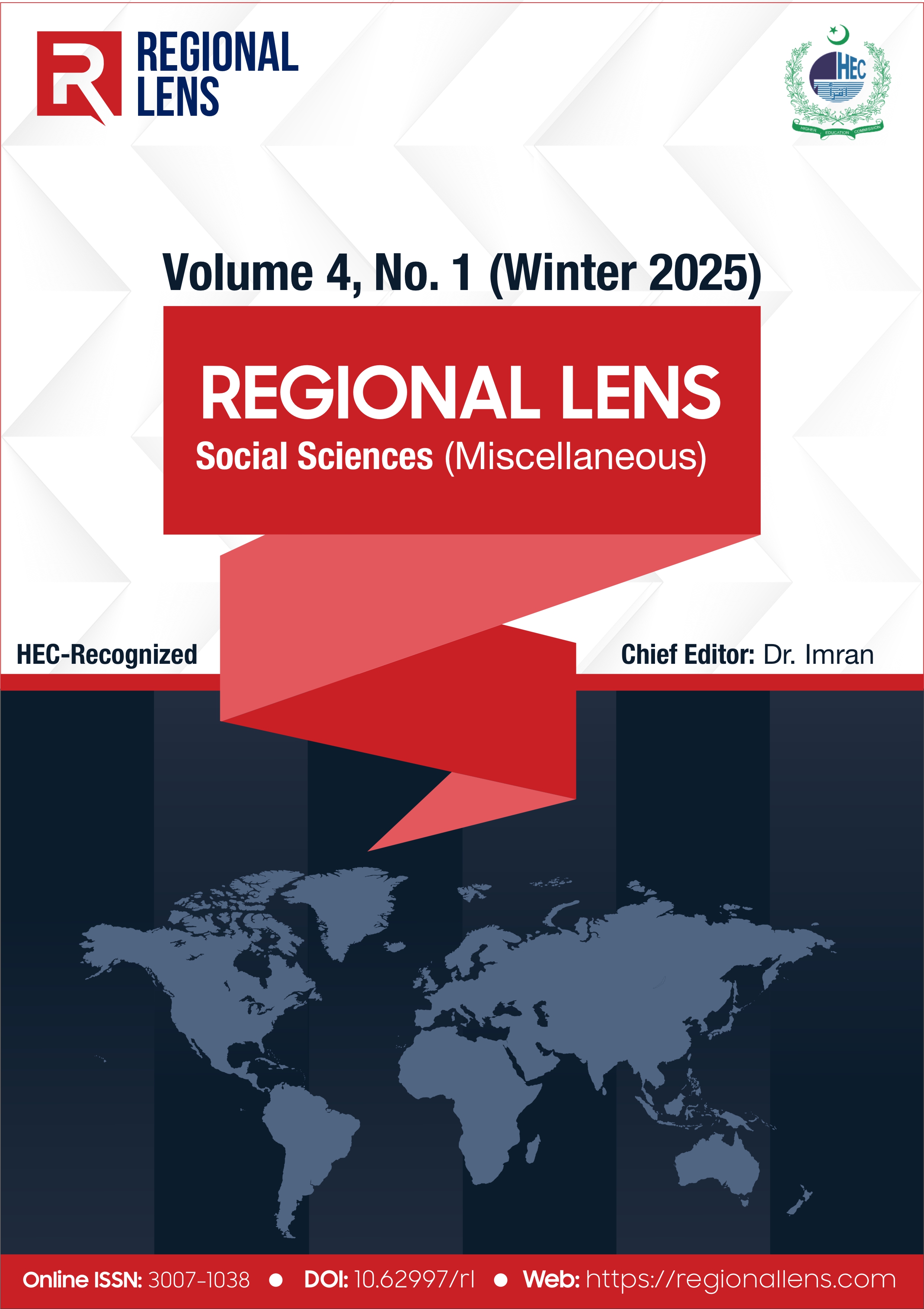Investigating the Effects of Social Media and Absenteeism on the Students’ Motivation for Learning
DOI:
https://doi.org/10.62997/rl.2025.41034Keywords:
Absenteeism, Social Media, Student MotivationAbstract
This study investigated the impact of social media and absenteeism on students' motivation to learn. Building on existing literature, the research formulated objectives and hypotheses to guide the investigation. A mixed-methods approach was employed, with primary data collected from all high schools in District Khyber. A sample of 336 Class 10 students was selected using the Rao soft formula, and data was gathered through closed-ended questionnaires. Following permission from relevant authorities, data analysis was conducted using SPSS, confirming the reliability and validity of the variables. Regression analysis revealed significant relationships between absenteeism, social media influence, and student motivation. The findings indicate that absenteeism negatively affects motivation, diverting students' attention from learning, while excessive social media usage correlates with decreased motivation levels. The study highlights the importance of accurate attendance records, parental notification, and vigilant monitoring of social media usage to minimize distractions. By addressing these factors, educators can foster an environment that enhances student motivation at the secondary level.
References
Asur, S., & Huberman, B. A. (2010, August). Predicting the future with social media. In 2010 IEEE/WIC/ACM international conference on web intelligence and intelligent agent technology (Vol. 1, pp. 492-499). IEEE. https://doi.org/10.1109/WI-IAT.2010.63
Balcikanli, C. (2015). Prospective English language teachers’ experiences in Facebook: Adoption, use and educational use in Turkish context. International Journal of Education and Development Using ICT, 11(3), 82-99. https://files.eric.ed.gov/fulltext/EJ1086653.pdf
Broussard, S. C., & Garrison, M. B. (2004). The relationship between classroom motivation and academic achievement in elementary‐school‐aged children. Family and consumer sciences research journal, 33(2), 106-120. https://doi.org/10.1177/1077727X04269573
Balfanz, R., & Byrnes, V. (2012). The importance of being in school: A report on absenteeism in the nation’s public schools. Baltimore: MD: Johns Hopkins University.
Bowen. (2005). The Impact of Social Media and Social Networks on Education and Students on Pakistan. International Journal of Computer Science Issues, 9: 407-411.
Boyd, D. m., & Ellison, N. B. (2007). Social network sites: Definition, history, and scholarship. Journal of Computer-Mediated Communication: JCMC, 13(1), 210–230. https://doi.org/10.1111/j.1083-6101.2007.00393.x
Bray, M., & Percy, R. (2004). Education and society in Hong Kong and Macao: Comparative perspectives on continuity and change (2nd ed.). Hong Kong:: The University of Hong Kong.
Castro, M., Expósito-Casas, E., López-Martín, E., Lizasoain, L., Navarro-Asencio, E., & Gaviria, J. L. (2015). Parental involvement on student academic achievement: A meta-analysis. Educational research review, 14, 33-46. https://doi.org/10.1016/j.edurev.2015.01.002
Cheung, C. M. K., Chiu, P.-Y., & Lee, M. K. O. (2011). Online social networks: Why do students use facebook? Computers in Human Behavior, 27(4), 1337–1343. https://doi.org/10.1016/j.chb.2010.07.028
Chaudhury, N., & Jeffrey, S. (2006). Ghost Doctors: Doctor Absenteeism in Bangladeshi Health Centers. World Bank Policy Research Working, 3065.
Gardner, R. (2001). When listeners talk. Amsterdam: John Benjamins Publishing Company.
Gottfried, M. A. (2011). The detrimental effects of missing school: Evidence from urban siblings. American Journal of Education, 117(2), 147–182. https://doi.org/10.1086/657886
Grendron, K., & Pieper, B. (2005). Student Attendance and absenteeism. Dropping out how much do schools contribute to the problem. Teacher College Record, 87(3), 374-392. https://doi.org/10.1177/016146818608700302
Guay, F., Chanal, J., Ratelle, C. F., Marsh, H. W., Larose, S., & Boivin, M. (2010). Intrinsic, identified, and controlled types of motivation for school subjects in young elementary school children. British journal of educational psychology, 80(4), 711-735. https://doi.org/10.1348/000709910X499084
Hamid, S., Chang, S., & Kurnia, S. (2009). Identifying the use of online social networking in higher education. Paper presented at the Ascilite.
Hortigüela-Alcalá, D., Sánchez-Santamaría, J., Pérez-Pueyo, Á., & Abella-García, V. (2019). Social networks to promote motivation and learning in higher education from the students’ perspective. Innovations in Education and Teaching International, 56(4), 412–422. https://doi.org/10.1080/14703297.2019.1579665
Herzberg, F. (2017). Motivation to work. New York: Transaction Publisher.
Lankshear, C., & Knobel, M. (2011). New literacies: Everyday practices and social learning. McGraw-Hill Education (UK).
Oberst, L. (2016). Students' Engagement in Social Media and Its Mainstay for Teaching and Learning. The Case of the Wa Nursing Training College. American Journal of Educational Research, 4(13), 961-969. https://pubs.sciepub.com/education/4/13/8
Ojo, O. A., & Ntshoe, I. M. (2017). Efficacy of collaborative in improving learning outcomes of graphic design in higher education. South African Journal of Higher Education, 31(3), 172-192. https://hdl.handle.net/10520/EJC-8084be93c
Mbodila, M., Ndebele, C., & Muhandji, K. (2014). The effect of social media on student’s engagement and collaboration in higher education: A case study of the use of Facebook at a South African university. Journal of communication, 5(2), 115-125.
Maslow, A. (2000). The Maslow business reader. London: John Wiley & Sons.
McClelland, D. C. (1987). Human motivation. Cup Archive.
Rogers, F. H., & Vegas, E. (2009). No more cutting class? Reducing teacher absence and providing incentives for performance. Reducing Teacher Absence and Providing Incentives for Performance (February 1, 2009). World Bank Policy Research Working Paper, (4847). https://papers.ssrn.com/sol3/papers.cfm?abstract_id=1352243
Tariq, W., Mehboob, M., Khan, M., & Fasee, U. (2011). The Impact of Social Media and Social Networks on Education and Students on Pakistan. International Journal of Computer Science Issues, 9: 407-411.
Ubogu, R. E. (2004). The causes of absenteeism and dropout among secondary school students in Delta Central Senatorial District of Delta State [Unpublished Ph. D Thesis]. Delta State University, Nigeria: Abraka.
Whiseand, P., & Rush, G. (1988). Supervising Police Personnel: Back to Basics. New York: Prentice Hall.




